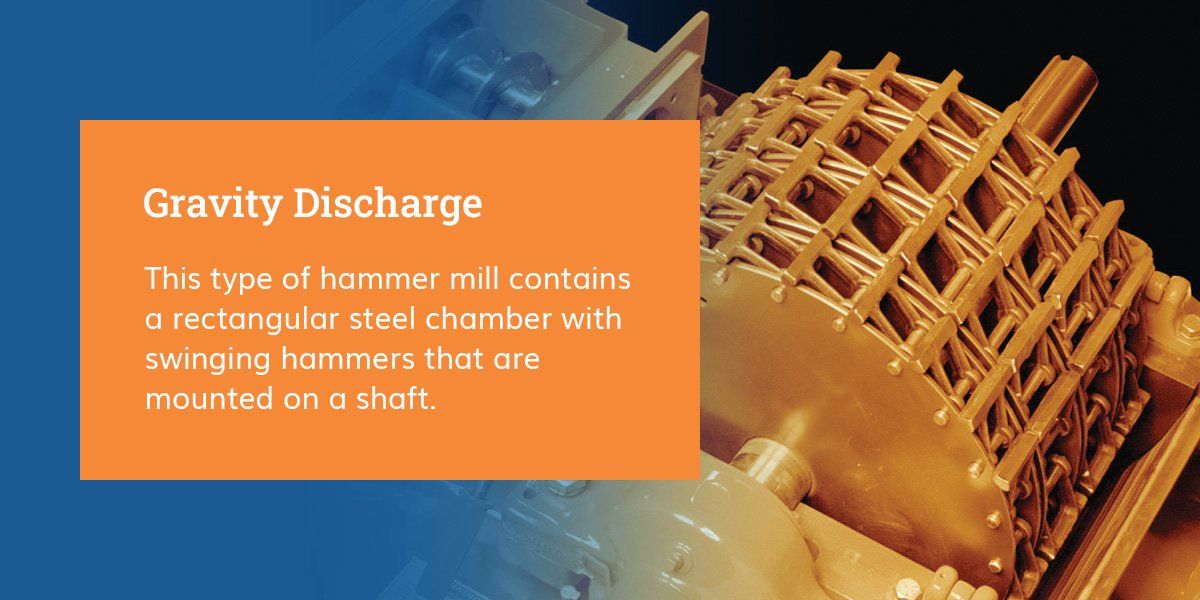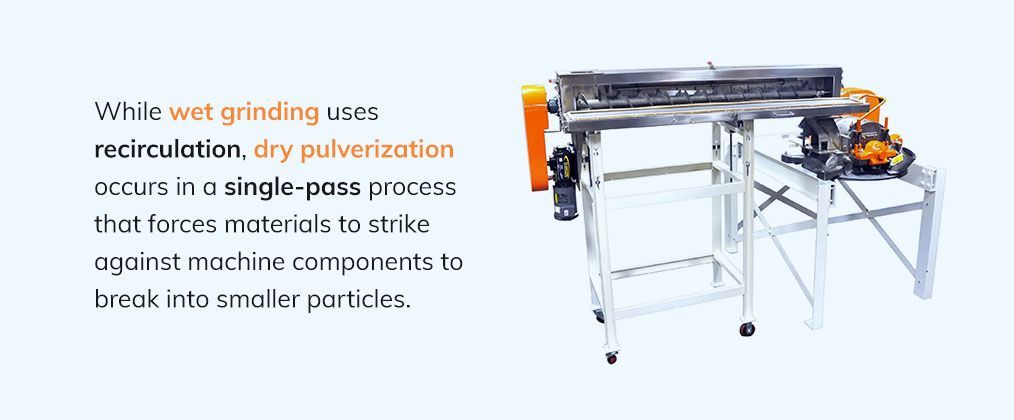Hammer Mill Types Explained | Pulva Corporation
This is a subtitle for your new post

There are many reasons to utilize size reduction equipment like a hammer mill. You can use this equipment on a wide variety of materials, such as concrete, coal, wood, shale, limestone, brick and plastic. Depending on the needs of your industry, you can select a hammer mill that presses bulk materials into the preferred state, from coarse to very fine.
If you are seeking size reduction equipment, you should understand what a hammer mill is, how it works, what the different types of hammer mills are, how a variety of industries use hammer mill pulverizers and the benefits of using a hammer mill.
A hammer mill, also known as a pulverizer, is designed to mill, grind and crush material. These mills have been in use for much of human history and function by using hammer blows at high speed to grind material. The material is shattered and disintegrated by the internal hammer. The hammer mill is used for processing materials in a wide range of industries, including:
- Food
- Mining
- Cosmetics
- Recycling
- Chemicals
- Agriculture
- Construction
- Manufacturing
- Pharmaceutical
- Power generation
A Hammer mill is a crusher that can be considered as a primary, secondary or tertiary type hammer mill. This availability allows for a wide range of uses. The final size of the product depends on a few factors of the hammer mill's design, such as:
- The rotor speed
- The hammer configuration
- The grinding plate's setting
- The material being crushed
- The size and number of hammers
- The size of the feeding mechanism
- The size of the perforated screens' openings
A hammer mill contains a cylindrical steel drum. Inside this drum, hammers are mounted on a vertical or horizontal shaft. The hammers inside this drum rotate around their axis. The material is fed into the drum, and when the drum rotates, the hammers strike the material.
After the material is ground and shredded, it passes through the chosen screens inside the drum. Hammer mills that do not contain screens instead use air to separate small and large particles from the ground material. Depending on the application, the power capacity and size of a hammer mill vary.
There are a few kinds of hammer mills. The following are some of the hammer mill styles you can choose from:
1. Lump Breakers
By functionality and design, a lump breaker hammer mill is quite different from other types of hammer mills. The parts of a hammer mill differ, as lump breakers do not have any swinging hammers. Instead, they have a fixed hammer structure, referred to as a comb. Rather than reducing particle size, this mill is used to smoothen paste or powder. To get the desired particle size, the particles are passed through the comb. You can use this hammer mill for dry chemicals, sugar and cement.
2. Full Circle Screen
A full circle hammer mill features a rotating screen to improve particle evacuation. This hammer mill can be used to reduce the size of lightweight components that do not require any initial grinding, such as grasses, grain, sawdust, corn and spices. Sticky materials cannot be hammered by this mill because the material could stick to the screen.

3. Gravity Discharge
This type of hammer mill contains a rectangular steel chamber with swinging hammers that are mounted on a shaft. The shaft rotates at a high speed and the hammering aids in particle size reduction. Additionally, particle-on-particle contact can also cause size reduction or contact in the grinding chamber with the breaker plate. The discharge from this hammer mill is then subjected to gravity.
You can use this mill to crush:
- Coal
- Glass
- Resin
- Brass
- Metals
- Porcelain
- Ceramics
- Dry chemicals
4. Horizontal In-Feed
A horizontal in-feed hammer mill is designed in a way that allows the material to be inserted from the side rather than the top. In function, this type of hammer mill is aggressive and used to grind heavy particles. This mill features pallet grinders and trim scrap grinders to conduct hardcore industrial grinding.
You can use this mill to grind:
- Trim scrap
- Pallet scrap
- Whole pallets
- Truss plant scrap
5. Pneumatic Discharge
Despite the thin hammers and chamber walls, the hammering function in a pneumatic discharge mill is similar to a gravity discharge hammer mill. The difference is that this type of hammer mill also contains a plate dashboard for size reduction. The air evacuation process assists the discharge to enhance the output.
A pneumatic discharge hammer mill is used for lighter materials like:
- Biomass
- Paper
- Greenwood
- Bone meal
- Wood chips
Hammer mills have numerous uses. While use varies depending on the type of hammer mill used and the industry, common hammer mill applications include:
- Food product grinding: One common application of hammer mills is food product grinding. You can use this hammer mill to grind several varieties of legumes, such as groundnuts, soya nutshells and beans. A hammer mill that has low hammer blows can remove hard nutshells.
- Dissolution: A hammer mill can be used for quick dissolution in the pharmaceutical, food and chemical industries. During the process, small particles can dissolve more quickly for fast formulation.
- Energy source reduction: Use hammer mills to reduce fuel sources like biofuels, biomass, corn, coal and wood.
- Powder production: Several types of hammer mills can be used for powder production in the chemical and pharmaceutical industries. In a hammer mill, the required ingredients are crushed to form an intermediate grade of powder and precise grain size.
- Material size reduction: Hammer mills can also be used to reduce material size, such as medicinal grains. These grains need to be packaged in a capsule in a precise quantity.
- Recycling and scrapping: Additionally, a hammer mill can be used for recycling and scrapping purposes, especially in the mechanical and automobile industries. Irreparable automobile parts can be crushed and hammered before being sent for melting. This molten material can then be used for recycling and new production.
At Pulva, we have been in business since 1938, so we have the experience to offer top-grade customized pulverizer solutions and feasibility testing. With our solutions, we can help you increase production and minimize downtime. To meet your size reduction needs, we provide quality services, parts and equipment.
We attribute our growth and enduring success to our new product introductions, skilled employees, state-of-the-art facilities, inventory of parts, prompt technical support and rebuild and repair services. Our manufacturing plant and offices are located in Saxonburg, Pennsylvania, and we serve customers worldwide.
Contact us at Pulva to learn more about the types of hammer mills and hammer mill uses or request a quote today.











